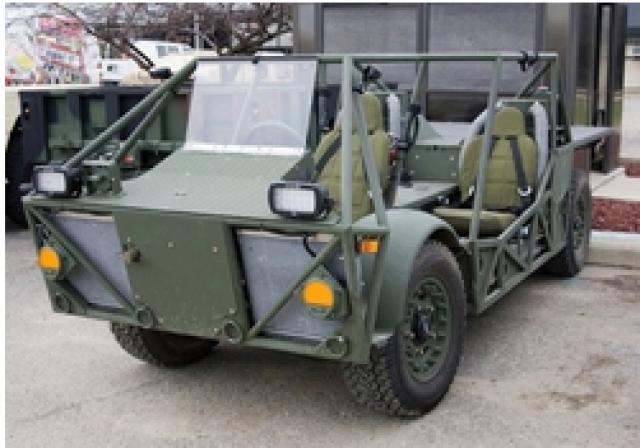ABERDEEN PROVING GROUND: The U.S. Army Research, Development and Engineering Command will display “Army Strength Through Technology” as part of Army All-American Bowl week activities in San Antonio, Jan. 6-9, 2011.
Displays from RDECOM centers and labs will form the Army Technology Zone, part of the Army Strong Zone that will be adjacent San Antonio’s Alamodome, site of the 11th annual high school all-star football game. The Army Strong Zone will offer local school groups, civic organizations and visitors a close look at the Soldiers and equipment in today’s Army.
The All-American Bowl, featuring stellar athletes and band members from across the country, begins at 1 p.m. (EST), Jan. 8, and will be televised nationally by NBC. The U.S. Army has sponsored the longest-running active high school all-American game for the past 10 years.
The U.S. Army Tank Automotive Research, Development and Engineering Center, headquartered in Warren, Mich., returns to the All-American Bowl with a selection of robots that visitors will be encouraged to operate and one of the Army’s newest “green” vehicles they can take for a ride.
The Clandestine Extended Range Vehicle, or CERV, the newest hybrid-electric diesel vehicle being tested by TARDEC, is designed for mobility operations in the field, including reconnaissance, surveillance and target designation. The CERV has an all-wheel-drive, diesel hybrid-electric power train that, in combination with its lightweight chassis, allows it to reach 80 mph and climb 60 percent grades.
TARDEC is also deploying a fleet of robots that visitors can negotiate through an obstacle course. TARDEC is the Department of Defense’s leader for developing ground robotics.
The U.S. Army Research Laboratory, headquartered in Adelphi, Md., is deploying a mix of new technology to San Antonio. The latest flexible displays, switchable vision blocks (periscopes), patient simulators and transparent armor materials head the list.
Visitors to the Army Tech Zone may find the Human Universal Load Carriage, or HULC, one of the most intriguing displays. HULC is a future Soldier technology – the Army’s latest exoskeleton system – which is being designed to take the physical load off the warfighter and enable him to carry heavy loads over rough terrain for extended periods of time.
The Night Vision and Electronic Sensors Directorate, an element of the Communications – Electronics Research, Development and Engineering Center, from Fort Belvoir, Va., will deploy a mobile tunnel, a 20-foot box truck with military images mounted on the inside. Visitors will experience sights and sounds that simulate a realistic nighttime battlefield environment, and they can wear night-vision systems to experience what American warfighters see and hear.
The Combat Feeding Directorate from Natick Soldier Research, Development and Engineering Center, in Natick, Mass., is deploying a containerized kitchen to show visitors how warfighters are fed on the battlefield. The kitchen has its own power generation, ventilation, environmental controls, refrigerated storage and hot and cold running water. It can feed up to 800 warfighters three hot meals a day.
Visitors will see the latest Unmanned Aerial Vehicles, like the RAVEN. Since 2006, the RAVEN has provided aerial reconnaissance and surveillance of the battlefield. The system is self-contained and rucksack portable.
Other Army Technology Zone displays include:
- “Green” Army initiatives such as the Tactical Garbage to Energy Refiner, or TGER, which converts waste products into a high-energy blend of synthetic gas and ethanol to power military generators.
- Water-generation technology that produces drinking water from humidity when traditional sources are scarce or unavailable.
- Immersive Environments and Training, such as the Avenger Table Top Trainer, used to train gunners to detect, acquire, identify and engage enemy aircraft and ground targets on a realistically simulated battlefield.
- A Rapid Engineering and Equipping Initiative – a laser/probe scanner that scans objects and builds 3D models in real time.
- The latest in renewable power technologies, including fuel cell power sources that convert chemical energy of a gaseous or liquid fuel into usable electrical energy.
- The Rucksack Enhanced Portable Power System, or REPPS, a lightweight, portable power system capable of recharging batteries and/or acting as a continuous power source.
Subject-matter experts, the Army scientists and engineers who have developed the latest technology, will be at the Army Technology Zone to explain the equipment and answer visitors’ questions.
RDECOM is the Army’s greatest advocate of Science, Technology, Engineering and Mathematics, or STEM, education. Visitors to the Army Technology Zone are certain to be challenged and stimulated by what they see and hear during their visit.










